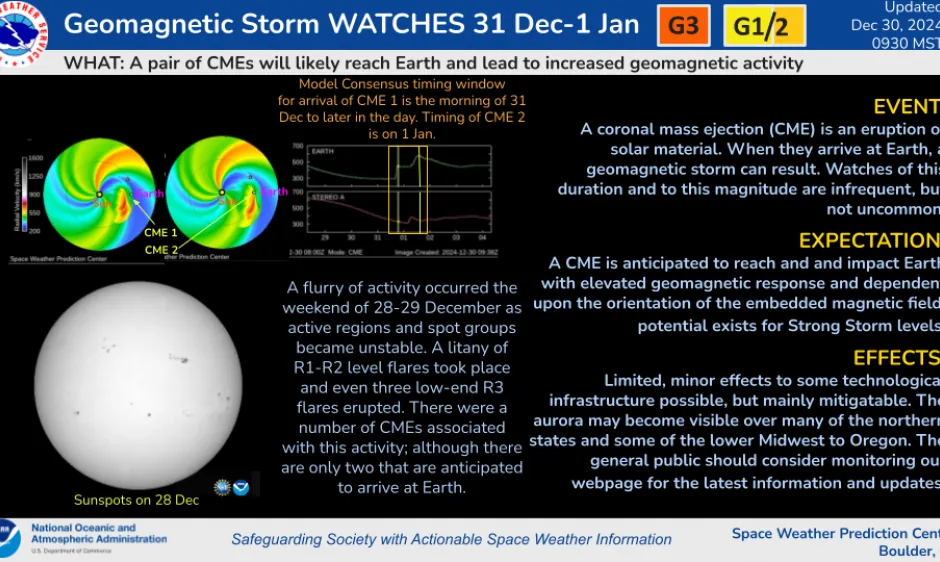New Year under the Northern Lights: NOAA gives forecast for geomagnetic storms
Kyiv • UNN
NOAA predicts strong geomagnetic storms on December 31 and weak ones on January 1 due to coronal mass ejections. The phenomenon may cause the northern lights to be visible and affect critical infrastructure.

Forecasters at the Space Weather Prediction Center of the National Oceanic and Atmospheric Administration (NOAA) claim that geomagnetic storms could lead to the New Year's Eve, including in the United States, coming under the northern lights, UNN reports citing Newsweek and NOAA.
Details
NOAA's forecast explains that "the G3 (strong) geomagnetic storm watch is in effect on December 31 and the G1 (weak) watch is in effect on January 1" due to an expected "pair of Earth-directed coronal mass ejections (CMEs).
"We won't know the true potential for geomagnetic disturbance response levels until CMEs arrive within 1 million miles of Earth (when they are about 30-60 minutes from our planet) and their structure and intensity can be measured by our solar wind observatories, NOAA DSCOVR and NASA ACE spacecraft," the forecast says.
"In addition, none of the coronal emissions will be a direct impact, which also makes it difficult to predict the intensity," it adds.

Lt. Brian Brasher, project manager for NOAA's Space Weather Prediction Center, told Newsweek in an email that the aurorae "are caused by the interaction between the solar wind and the Earth's magnetic field, which is itself disturbed by the solar wind.
"However, our primary mission is focused on protecting critical infrastructure and essential services such as power grids, satellites, communications and navigation networks, aviation, and manned spaceflight, all of which can be adversely affected by space weather," Brasher said. - "While the aurorae provide a fantastic opportunity to engage the public, they are usually harmless and not our primary focus.
While forecasters can predict the likelihood that the aurora will be visible in different areas, the phenomenon is noted to be impossible to predict with complete accuracy in a few days or even hours.
The forecast can be viewed on the website of NOAA.